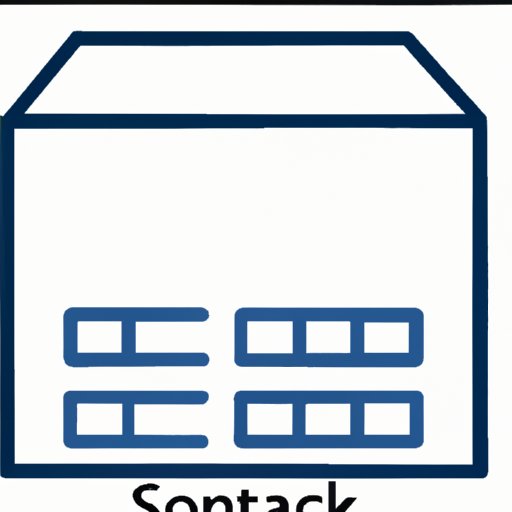Introduction
In computer science, a packet is a unit of data that is sent across a network from one node to another. It is composed of a header and a payload, which contains the actual data being transmitted. Packets are used to transfer data in a wide variety of applications, from email to streaming media services. They are an integral part of the internet and networking technologies, allowing for efficient and reliable communication between two or more nodes.
Exploring the Basics: What is a Packet in Computer Science?
A packet is a self-contained unit of data that is sent over a network from one node to another. It is composed of two main parts: a header, which contains information about the packet; and a payload, which contains the actual data being transmitted. The header includes details such as the source and destination addresses, the length of the packet, and a checksum to ensure the integrity of the data. The payload typically contains application-level data such as text, audio, video, or images.
Packets are divided into different sizes, depending on the application and network protocol being used. Smaller packets are used for real-time applications such as voice and video, while larger packets are used for high-bandwidth applications such as file transfers. The size of the packet can affect the speed and reliability of the transmission, so it’s important to select the right size for the task at hand.
How Packets are Used to Transmit Data in Computer Science
To understand how packets are used to transmit data, it’s important to understand the concept of packet switching. This is a process in which data is broken down into smaller chunks, or packets, and sent across a network. Each packet is routed independently, allowing it to find the most efficient path to its destination. This allows for faster and more reliable data transmission, as each packet can take a different path if one is congested or unavailable.
Packet switching has many advantages over traditional circuit switching, which requires a dedicated connection between two nodes. With packet switching, the data can be sent over multiple paths at once, increasing reliability and reducing latency. Additionally, it allows for more efficient use of bandwidth, as only the packets that are necessary are sent. This makes it ideal for applications such as streaming media and online gaming.

Investigating Security Implications of Packets in Computer Networks
Although packet-based networks provide many advantages, they also come with security risks. For example, due to their small size, packets can easily be intercepted by malicious actors. Additionally, since packets are routed independently, it’s possible for them to be rerouted through insecure networks, exposing them to potential attacks. To mitigate these risks, organizations should implement security measures such as encryption and authentication.
Additionally, organizations should monitor their networks for any suspicious activity. By analyzing traffic patterns, administrators can identify potential threats and take steps to mitigate them. Finally, organizations should ensure that their networks are up to date with the latest security patches and updates, as this can help prevent malicious actors from exploiting known vulnerabilities.
Conclusion
In conclusion, a packet is a self-contained unit of data that is sent over a network from one node to another. It is composed of two main parts: a header, which contains information about the packet; and a payload, which contains the actual data being transmitted. Packets are used to send data via packet switching, which allows for faster and more reliable data transmission. However, there are security risks associated with packet-based networks, so organizations must take steps to mitigate these risks.
(Note: Is this article not meeting your expectations? Do you have knowledge or insights to share? Unlock new opportunities and expand your reach by joining our authors team. Click Registration to join us and share your expertise with our readers.)
